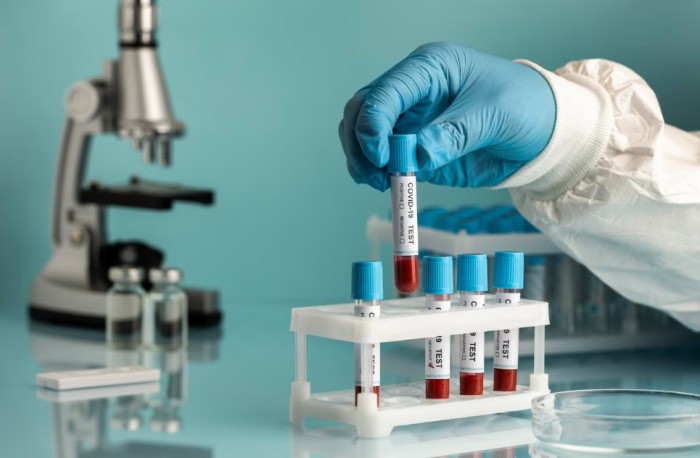IMANA NEWS
Life After COVID-19 in 2023: Changes and Our Immunity
11 September 2023

COVID-19 in 2023 looks vastly different from the initial outbreak. The variants of the disease have mutated and evolved, the symptoms have changed, and our collective attitudes towards the pandemic have also transformed.
The ultimate impact of COVID-19 in the long term has yet to be seen. After all, we’re still in the midst of fighting its new variants. The truth about COVID-19 is that the disease is still around and taking lives, particularly as precautionary measures have been reduced, making it one of the worst global pandemics in recent times.
Let’s explore all there is to COVID-19 in 2023—what the current atmosphere is, what it means for our immune systems, the risks associated with new strains, and how it affects children.
Evolution of COVID-19 in 2023: Current Variants and Statistics
Scientists warned us of a potential SARS-CoV-like virus in horseshoe bats as far back as 2007. Eighteen years later, the COVID-19 outbreak emerged as the most deadly pandemic to impact human respiratory systems since the Spanish influenza pandemic of 1918.
December 2020 and January 2021 saw peaks in hospitalizations and reported cases in the United States while global numbers heightened and receded at different periods.
From 2019 to the present times, the SARS-CoV-2 virus which causes COVID-19 has undergone several mutations. New strains are frequently surfacing. Each differs in the severity of its impact on the human body and how contagious they are.
The World Health Organization has named these new variants using the Greek alphabet, with the Alpha variant being the first in 2020. It was highly contagious and comprised 66% of COVID-19 cases, more deadly than the original virus.
Other notable variants include:
- Delta: Identified in late 2020, this was the predominant COVID variant across the world as it was highly transmissible and severe.
- Beta: Identified towards the end of 2020, this was 50% more contagious and severe than the original COVID strain.
- Omicron: First identified in late November 2021, this was more transmissible than delta, but relatively less severe, carrying over 35 mutations.
Most recently, between the 31st of July and the 27th of August 2023, there were over 1.4 million new COVID-19 cases and 1,800 deaths reported to WHO.
As of now, the concern surrounding the new Pirola variant, first distinguished towards the end of July, is relatively low as experts suggest the pandemic is in a different phase.
This is because vaccines have been proven to improve defenses against the disease and prevent severe illness and death compared to when COVID-19 first appeared. Stronger immunities have also contributed to better outcomes and reduced deaths.
It is worth noting, however, that testing for COVID-19 has declined by 90% worldwide, including the United States.
Furthermore, the new variant has raised concerns due to its numerous variants which may not cover the existing immunity derived from vaccines or previous infections.
There are also insufficient virus samples to help determine the true scope of the impact that this particular variant may have on immunity.
Impact of COVID-19 on the Immune System
The human immune system responds to the COVID-19 infection in two phases:
Phase 1
The first phase is characterized by immune protection and immunity exacerbation. During this stage, an endogenous defensive immune response occurs as the virus is incubated. Moreover, an antiviral immune response is provoked by a healthy individual’s human leukocyte antigen (HLA) during the non-severe stage.
Phase 2
In the second phase, wide inflammation occurs as the immunity is suppressed, causing organ damage in some cases. The COVID-19 virus can then severely impact an individual’s overall health and well-being.
It was found to reduce sleep quality, which led to depression, negative moods, and anger issues, in addition to other symptoms like respiratory issues, muscle aches, and more.
Severe cases of COVID-19 may also cause long-term changes in the innate immune system which is the primary line of defense against pathogens. This could explain why people experiencing long COVID have a higher occurrence of inflammation in addition to various kinds of organ damage.
Long COVID can also cause a lengthy list of symptoms including:
- Chest pains
- Respiratory issues
- Fatigue and post-exertion malaise
- Fevers
- Headaches
- Sleep issues
- Changes in taste and smell
- Diarrhea
- Joint and muscle aches
- Rashes
The symptoms of long-term COVID-19 may also include persistent symptoms of the original virus that last over a few weeks or months.
How COVID-19 Impacted Children
The focus has not been directed towards children in the midst of the pandemic. However, they are a gravely impacted demographic. Beyond its health impacts, it affected children in the following ways:
- Education was hindered
- It prevented healthy socialization with peers
- It generated anxiety and concerns among children about their future.
- Extended isolation contributed to behavioral changes.
- They were cut off from parents who worked in the healthcare sector and parents who were frontline workers.
- Online classes led to internet and social media addiction in some cases.
- There was an increase in abuse, maltreatment, abandonment, and exploitation.
- Some noticed prevalent sleep disturbances.
- There was sensory deprivation linked with depression and anxiety.
Not all of COVID-19’s effects were detrimental to children. For example, parents working from home benefitted children in terms of development and bonding with their families.
Final Thoughts
COVID-19 in 2023 may not seem as severe and life-threatening as it did in the initial stages of the pandemic, but it remains an area of concern.
The Islamic Medical Association of North America (IMANA) focuses on enhancing the medical sector with our medical relief efforts as well as education and awareness programs.
We aim to provide support to those who may need it by providing information about vaccinations and mental health support.